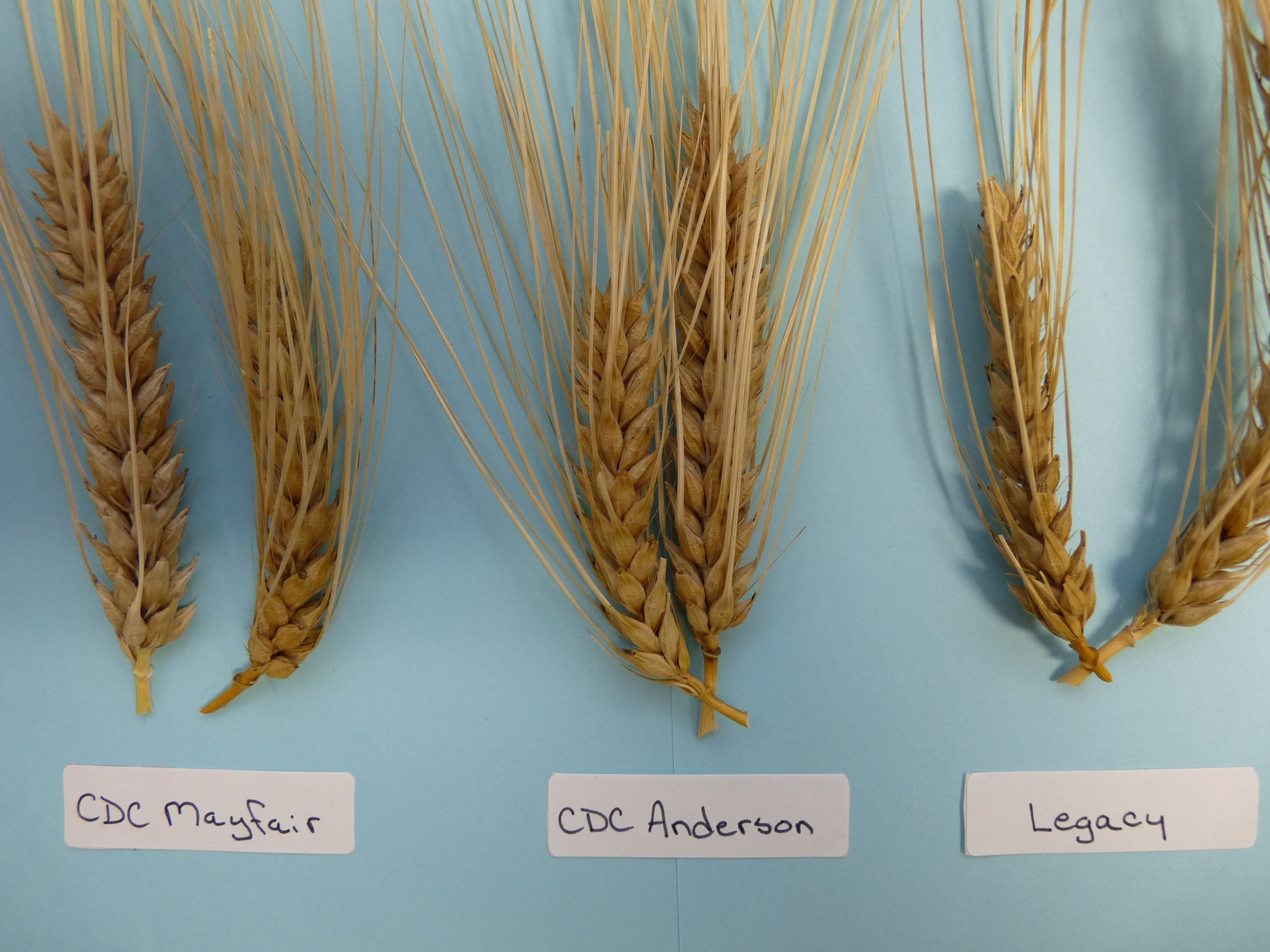CDC Anderson
| Denomination: | 'CDC Anderson' |
|---|---|
| Botanical Name: | Hordeum vulgare |
| Applicant/Holder: |
University of Saskatchewan Crop Development Centre 4D36 Agriculture Building, 51 Campus Drive Saskatoon, Saskatchewan S7N 5A8 Canada |
| Breeder: |
Bryan Harvey, University of Saskatchewan, Saskatoon, Saskatchewan |
| Agent in Canada: |
SeCan Association 400-300 Terry Fox Drive Kanata, Ontario K2K 0E3 Canada Tel: 613-592-8600 ext.223 |
| Application Date: | 2011-02-23 |
| Application Number: | 11-7174 |
| Grant of Rights Date: | 2013-02-11 |
| Certificate Number: | 4455 |
| Date rights surrendered: | 2018-02-11 |
Variety Description
Varieties used for comparison: 'CDC Mayfair' and 'Legacy'
Summary: 'CDC Anderson' has very weak to weak intensity of anthocyanin colouration of the flag leaf auricle while it is weak to medium in 'CDC Mayfair' and 'Legacy'. Just after anthesis, the spike of 'CDC Anderson' has medium to strong glaucosity while it is weak to medium in 'CDC Mayfair'. 'CDC Anderson' has spikes with v-shaped collars while it is platform shaped in 'Legacy'. The first segment of the rachis in 'CDC Anderson' is medium in length while it is long in 'Legacy'.
Description:
PLANT: six row, spring malting barley, erect to semi-erect growth habit at tillering, absent or very sparse pubescence on the lower leaf sheaths, low to medium frequency of plants with recurved flag leaves
AURICLES: very weak to weak intensity of anthocyanin colouration, weak pubescence on the margins
FLAG LEAF SHEATH: strong glaucosity, weak pubescence
FLAG LEAF: medium to strong pubescence on blade
SPIKE: early to mid-season emergence, medium to strong glaucosity, erect to semi-erect attitude, v-shaped collar, parallel shape, dense, glume and awn of the median spikelet is longer in length to the grain
FIRST SEGMENT OF RACHIS: medium length, weak to medium curvature
LEMMA AWNS: strong to very strong anthocyanin colouration of the tips, longer than length of spike, semi-smooth spiculations on margins
KERNEL: medium intensity of anthocyanin colouration of nerves of the lemma at the end of anthesis, whitish aleurone layer, long rachilla hairs, husk present, medium spiculation of inner lateral nerves of dorsal side of lemma, absent or very weak to weak hairiness of ventral furrow, clasping disposition of lodicules, horseshoe to incomplete horseshoe shape of basal markings, medium length, medium width
AGRONOMY: fair to good resistance to lodging, fair to good tolerance to straw breakage and drought, good malting quality
Origin & Breeding History: 'CDC Anderson' (experimental designations SM05198, SR425) originated from the cross 'SM00207' / 'SM00150' made under glass at the Crop Development Centre (CDC) in 2001 using the pedigree breeding system. The F1 thru F4 generations were grown as bulk populations with the F1 and F3 generations being grown in winter nurseries in New Zealand in 2001/02 and 2002/03. The F4 generation was grown in the field at Saskatoon during the 2003 growing season. It was then grown and selected as a single F4 derived F5 row plot in Saskatoon in 2004. The seed from the F5 row plot was bulked as the line that became 'SM05198'. It was tested in CDC yield trials in 2005 and 2006 followed by testing in the Western Canadian 6-row Barley Cooperative Trials as 'SR425' during the years 2007 and 2008. Selection criteria included high grain yield potential, good malting profile characterized by low grain protein, low malt beta glucan, and high friability and resistance to splot blotch and smut.
Tests & Trials: Tests and Trials were conducted in 2010 and 2011 at the Crop Development Centre of the University of Saskatchewan, Saskatoon, Saskatchewan. Plots consisted of 5 rows with a row length of 3.66 meters and a row spacing of 0.2 meters. There were 2 replicates in 2010 and 3 replicates in 2011 arranged in a RCB design each year.
Click on image for larger view

Barley: 'CDC Anderson' (centre) with reference varieties 'CDC Mayfair' (left) and 'Legacy' (right)
- Date modified: